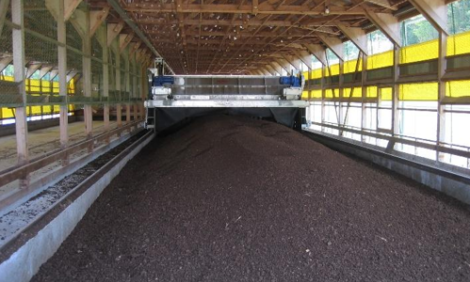



Are Fumonisins a Real Threat to the Poultry Industry?
Mycotoxins of the fumonisin group have adverse effects on poultry health and productivity, according to this review from Biomin. Effective and long lasting mycotoxin risk management in combination with correct farm management, it concludes, will improve the health status and consequently, the performance of animals.In 1995, an unusual disease outbreak characterized by black sticky diarrhea, severe reduction in food intake, egg production and body weight followed by lameness and death was observed in two layer farms. The mortality rate was 10 per cent while egg production was reduced by 20 per cent. Analysis of the diets indicated contamination with fumonisin B1 up to 8.5mg per kg in combination with aflatoxin B1 up to 0.1mg per kg (Prathapkumar et al., 1997).
While fumonisins were only subject to regulations in one country in 1995 (FAO, 1997), this number has now increased to six, with limits for maize ranging from 1,000 to 3,000µg per kg (FAO, 2004). In Europe, fumonisins are now regulated in Bulgaria (FB1 and FB2 in maize and maize products), France (FB1 in cereals and cereal products) and Switzerland (FB1 and FB2 in maize). Specific EU-harmonised limits for fumonisins in food or feed have not been established yet. Limits for FB1, FB2 and FB3 in animal feeds currently only exist in the USA, as a guide for the industry.
Lowest Observed Adverse Effect
Available data suggests that in broiler chickens, the lowest observed adverse effect level (LOAEL) is approximately 2mg per kg bodyweight per day (calculated from Henry et al., 2000).
Interestingly, however, according to the Commission recommendation 2006/576/EC (Table 2), concentrations of fumonisin B1 and B2 below 20mg per kg in complementary and complete feedingstuffs are considered 'safe' for poultry.
Why is there such a wide disparity between the LOAEL for broiler chickens at 2mg per kg bodyweight per day and the European Commission's recommendation of 20mg per kg? The key difference is that the Commission refers to recommendations and not regulations. The main problem is that farmers, feed millers and big integrators think that by respecting the EC recommendations and keeping concentrations of fumonisins under 20mg per kg for complementary and complete feeds, they will be on the safe side.

Scientific literature is replete with information on the clinical and sub-clinical effects of individual mycotoxins in various livestock species, but what about different mycotoxin combinations (Table 1)? This question arises from the fact that concentrations of individual mycotoxins associated with poor livestock performance and/or disease symptoms in commercial operations are usually lower than those reported to cause toxic effects in controlled research studies. Fumonisins act in synergism with fusaric acid and ochratoxin A (Bacon et al., 1995; Javed et al., 1993) and have additive interaction with moniliformin and T-2 toxin (Kubena et al., 1995; Javed et al., 1993).

(Adopted from EC/576/200)
Deactivation of Mycotoxins
The most widely applied method for protecting animals against fumonisins is the mixing of feed with clay minerals which are supposed to bind the mycotoxins efficiently in the gastro-intestinal tract.
So far, no single adsorbent has been tested effective against most types of mycotoxins including fumonisins (Huwig et al., 2001).
An alternative way of removing non-adsorbable mycotoxins is via enzymatic detoxification (or biotransformation). This method is defined as degradation or transformation that reduces or removes the toxicity of mycotoxin. Specific mycotoxin-degrading enzymes offer a unique and natural way of encouraging biotransformation in the digestive tract of animals.
It is known that the 12,13-epoxide ring of trichothecenes (e.g. DON, T-2 toxin) is mainly responsible for the toxic activity and their removal will lead to a significant loss in toxicity. Binder et al. (1998) were among the first to describe a novel strain of Eubacterium sp. (Eubacterium BBSH 797) with the capability to biotransform DON to DOM-1. As for zearalenone, its metabolism by esterases produces a compound that is no longer oestrogenic (ZOM-1). In case of fumonisins, fumonisin-degrading enzyme preparation (FDE) is capable of fumonisin B1 biotransformation into non-toxic metabolite hydrolysed FB1 (HFB1) (Hartinger and Moll, 2011).
Biological methods, e.g. biotransformation, should become the technology of choice in the field of mycotoxin-deactivation, as enzymatic reactions offer a specific, irreversible, efficient and environmentally friendly way of detoxification that leaves neither toxic residues nor any undesired by-products.
Adverse Effect of Fumonisin in Poultry and its Counteraction
The objective of the trial was to evaluate the efficacy of FUMzyme® - fumonisin-degrading enzyme preparation (FDE) in diminishing the toxic effects of fumonisin (FUM) added to broilers rations.
For 21 days, 600 one-day old Cobb male broilers were used. Animals were randomly divided into four treatments with 12 replicates and 10 birds in each replicate, according to the experimental design shown in Table 3.
The following parameters were evaluated:
- Weekly: individual weight of the birds; feed intake per replicate.
- End of the trial: Feed conversion rate (FCR) and sphinganine:sphingosine ratio.
Sphinganine:sphingosine ratio was measured by HPLC-MS/MS after blood was collected from 12 randomly selected birds per treatment.

FDE - fumonisin degrading enzyme preparation, FUM - fumonisin
Results
The negative effect of fumonisin was clearly evident from the first week of the experiment, with the feed intake of the affected animals inferior to that of the control group. The addition of the FDE improved both the feed intake and the final body weight of the birds in a statistically significant way (P<0.05) compared with animals given the fumonisin. This resulted in a better FCR at the end of the experiment for the supplemented animals (Table 4).

a,b,c,d,e Means within the same column with different superscripts are significantly different
FDE - fumonisin degrading enzyme preparation, FUM - fumonisin
The accumulation of sphinganine and sphingosine in the serum and urine is a useful biomarker for the exposure of fumonisins. These free sphingoid bases are toxic to most cells as they affect cell proliferation, induce apoptosis or necrotic cell death, and are associated with hepato and nephrotoxic effects. As expected, animals that consumed feed contaminated by FUM (Figure 1) showed an increase in the sphinganine:sphingosine ratio when compared with the control group. The addition of the FDE decreased these values in a statistically significant manner (P<0.05).

(Bars with different superscripts differ significantly (P<0.05))
Conclusion
All clinical and sub-clinical effects of fumonisins in poultry in combination with fact that any individual grain can be contaminated with more than one mycotoxin or that the incorporation of numerous grain sources which are contaminated with different mycotoxins into a single feed may result in a diet that contains a number of different mycotoxins.
This fact brings us to conclusion that only effective and long lasting mycotoxin risk management in combination with correct farm management will improve the health status and consequently, the performance of animals.
April 2013








